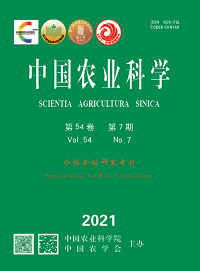【Objective】 Simplified nitrogen managements (SNMs) are labor saving methods and could make more profits in rice (Oryza sativa L.) cultivation. In view of labor shortage, high labor cost and low fertilizer utilization in rice cultivation of China, the aim of this study was to explore a simplified and efficient application of nitrogen featured by “one basal-dressing and one top-dressing”, so that the amount and frequency of nitrogen application could be reduced, and the profit of rice planting could be improved. 【Method】In order to study the effects of SNMs on the grain yield, dry matter production, nitrogen use efficiency, and grain quality of double-cropping rice in South China, the field experiment was conducted by a conventional indica rice variety of Wu-Shan-Si-Miao, which was designed by a completely randomized block with four replicates. In 2018, 6 treatments were established, i.e. no nitrogen (N0), three-control fertilization (TC), TC with nitrogen reduction (RTC), and 3 simplified nitrogen managements (SNM1, SNM2, and SNM3). In 2019, 6 treatments were also established, i.e. no nitrogen (N0), three-control fertilization (TC), famers’ fertilizer practice (FP), and 3 simplified nitrogen managements (SNM2, SNM4, and SNM5). 【Result】 In the later growing season of 2018, the grain yield of SNM2 was not significantly different from that of TC, but the yields of both treatments were significantly higher than those of RTC, SNM1, and SNM3. In 2019, the grain yields of SNM2, SNM4 and SNM5 were also not significantly different from that of TC. However, compared with FP, the yields of those treatments were increased by 7.36%-7.51%, which was mainly due to the spikelet number per panicle was improved in 2019. And the panicle numbers, spikelet number per panicle, seed setting rate, and 1000-grain weight of SNM2 were not significantly different from TC (except for 1000-grain weight in 2019) for both seasons. In 2018, the nitrogen recovery rate (RE), agronomy use efficiency (AE), physiological use efficiency (PE), nitrogen harvest index (NHI) of SNM2 were all not significantly differed from that of TC, while the partial factor production (PFPN) of SNM2 was significantly higher than that of TC, and the RE, AE, and PFPN of the SNM1 and SNM3 were obviously lower than that of SNM2. In 2019, the 5 nitrogen utilization indexes (RE, AE, PE, NHI and PFPN) of the 3 SNMs were not significantly different with those of TC, but the RE, AE and PFPN of those treatments were all significantly higher than that of FP. The number of spikelets per unit area, biomass, and nitrogen uptake of the SNMs were all higher than those of FP. In addition, the chalky rice rate of SNM2 was significantly lower than that of TC, but other grain quality of SNMs was not significantly different from that of FP and TC in 2018. 【Conclusion】 The grain yield and nitrogen use efficiency of SNM2, which had 10% less nitrogen application and with only basal application and one topdressing in nitrogen management, was similar with TC. However, SNM2 had significantly higher grain yield and nitrogen use efficiency than FP. Additionally, the appearance quality of SNM2 was significantly improved, while the milling quality, cooking and eating quality were not significantly changed. Thus, it could be widely adopted in rice production in South China for its simplified cultivation.









